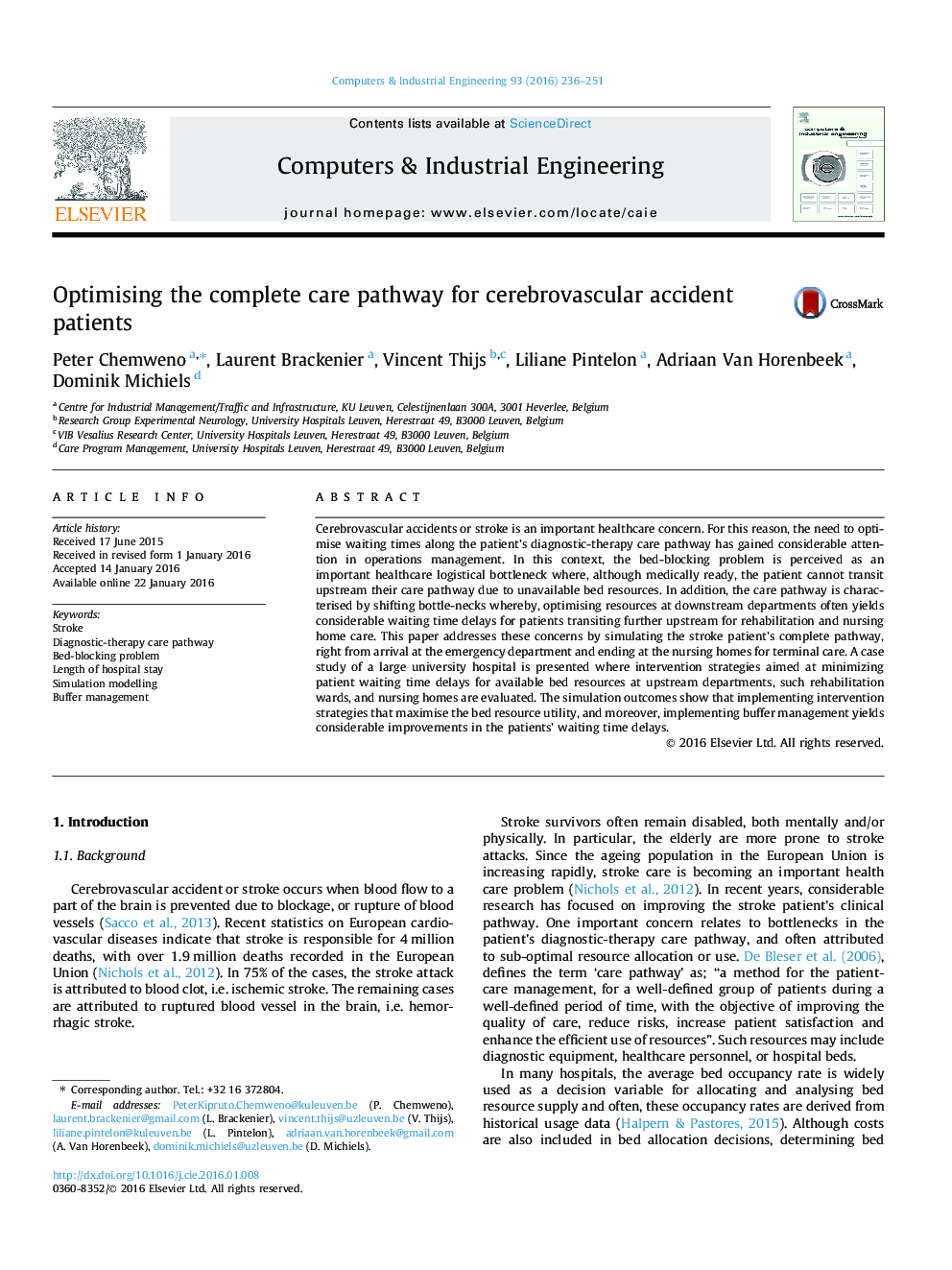| Article ID | Journal | Published Year | Pages | File Type |
|---|---|---|---|---|
| 1133379 | Computers & Industrial Engineering | 2016 | 16 Pages |
•We model the diagnostic path for stroke patients along the complete care pathway.•We evaluate the impact of bed-blocking problem on the patient length of hospital stay.•We evaluate the impact of alternative resource allocation options on the length of stay.
Cerebrovascular accidents or stroke is an important healthcare concern. For this reason, the need to optimise waiting times along the patient’s diagnostic-therapy care pathway has gained considerable attention in operations management. In this context, the bed-blocking problem is perceived as an important healthcare logistical bottleneck where, although medically ready, the patient cannot transit upstream their care pathway due to unavailable bed resources. In addition, the care pathway is characterised by shifting bottle-necks whereby, optimising resources at downstream departments often yields considerable waiting time delays for patients transiting further upstream for rehabilitation and nursing home care. This paper addresses these concerns by simulating the stroke patient’s complete pathway, right from arrival at the emergency department and ending at the nursing homes for terminal care. A case study of a large university hospital is presented where intervention strategies aimed at minimizing patient waiting time delays for available bed resources at upstream departments, such rehabilitation wards, and nursing homes are evaluated. The simulation outcomes show that implementing intervention strategies that maximise the bed resource utility, and moreover, implementing buffer management yields considerable improvements in the patients’ waiting time delays.
